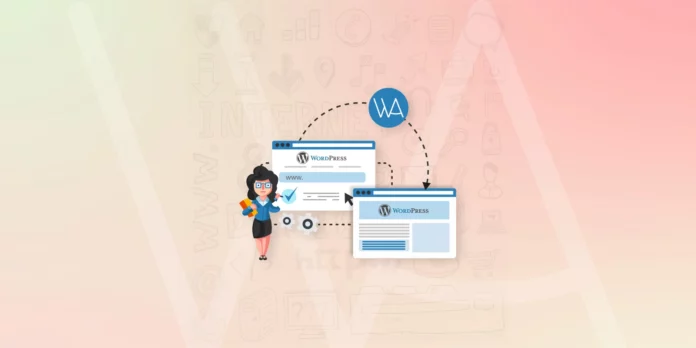Open-source software, often abbreviated as OSS, continues to significantly impact IT in all fields. Thanks to its many benefits, open-source software is everywhere, from companies to small businesses, schools, and personal projects.
In this post, we dive into what exactly is open source software, giving you a close-up look at the advantages of rolling it out and the risk factors to beware of.
What is Open Source Software?
In simple words, open-source software is software that is freely available for use by anyone. Unlike closed source software, open-source software is distributed together with its source code.
This allows programmers and users to change the software, modify it by adding to it and fix parts that aren’t working to ensure that the program best fits their needs.
Most Popular Open Source Software
As open-source becomes more mainstream, you can now get any program your business or personal project needs. Whether you’re into making social media templates, website development, accounting, or multi-media, there’s an open-source software version awaiting you.
These are the most popular open-source software across all industries today;
- Mozilla Firefox (web browser)
- WordPress (blog hosting platform)
- Juice Receiver (podcasting)
- Apache (web server software)
- Libreoffice (business productivity suite)
- MySQL (database)
- Joomla (enterprise CMS)
- Magento (eCommerce website platform)
- PHP (web application scripting engine)
- Android (mobile phone platform)
Why You Should Use Open Source Programs
Open-source software is taking over the world. The 2020 OSRA Report shows that the vast majority of commercial codebases, 99%, have at least one open-source component supporting their IT infrastructure.
The biggest advantage of using open-source software is the significant savings that it comes with. Because it’s freely available for everyone to use, you don’t have to pay to download and use it.
And you continue saving year in year out because, unlike proprietary software systems, open-source programs don’t need to be renewed every year.
Another benefit of using open-source software is its reliability. Most open-source programs are created by well-established companies with the financial muscle to attract the most talented developers in the game.
Additionally, these programs are continually monitored by tens of thousands of users and experts who constantly improve quality and security. If a flaw or bug is noted, it’s reported to the community and patched as quickly as possible. This leads to products that work well for the most part.
Open Source Programs Safety Risks
The open-source route is a great way of getting high-end programs at a fraction of what proprietary software costs. And the fact that there’s a large community of people maintaining it makes it a positive thing for developers and users.
Ultimately, there’s no reason why you shouldn’t roll out the open-source programs you’re targeting now. But before doing that, SNYK, a leader in developer-oriented security platforms, has a detailed analysis of the risks of open-source software that developers and users should be aware of.
Frankly, considering the massive community involvement in its construction and the unregulated distribution, it’s obvious that open source attracts a wide range of problems. Issues related to open source software fall into four major categories: technical, legal, contributing, and governance.
Let’s briefly discuss some of the downsides and risks associated with open source.
Varying Open Source Licenses to Understand
Open source components often involve a chain of dependencies. Each of these dependencies has its license with unique terms and conditions that most developers and users don’t care to read.
Generally, over 200 types of open source licenses can be divided into two major categories: copyleft and permissive. The two divisions mainly differ on the requirements and restrictions they place on the users.
Copyleft licenses require that any product derived from a copyleft-licensed software must be released on a copyleft license, too. In other words, it nullifies any attempt by an organization to make open source work a commercial venture.
On the other hand, permissive is a non-copyleft license. It grants users and developers more freedom to do whatever they want with the software, including proprietary derivative works.
These varying terms mean that some open-source software components are incompatible and can’t be used together. Also, the more components you’re planning to employ, the harder it becomes to track, compare and abide by the licenses.
Everyone is Aware of Vulnerabilities
Another major problem with open source software is that vulnerabilities are made public to everyone in the community. Everyone in this context includes malicious actors looking for an opportunity to strike.
The OWASP (Open Web Application Security Project) and NVD (National Vulnerability Database) give advanced warnings to users and developers in specific projects. However, if you’re not fast enough to update the components, you’re only ripening your website for exploitation by low-lying cybercriminals.
Risk of Infringement
Unlike proprietary software programs, open-source software does not guarantee the support, security, and safety of the content. Most of the support is done by expert volunteers from the community, meaning it can be cut short without notice. Also, since the community members are not obligated to offer support, you can’t pin them down for faulty guidance.
It’s crucial to remember that some of the open-source software codes are created by anonymous contributors. This makes it technically challenging to detect a copyright-protected code lifted from a third-party source. The danger of this is that you may be held responsible for software piracy whether you’re aware of the infringement or not.
Conclusion
Many organizations, companies, and businesses are taking advantage of open-source software, and so should you. However, while taking this route will save you money in the long run, it’s crucial to consider the potential problems that can come with it.
This is particularly crucial if you’re planning to rely on open-source programs entirely. Weigh the strengths and weaknesses of these programs in relation to your goals before deciding whether it’s the best route to take.







Your post about Open-source Software and Web Development is very useful!
Thanks for your sharing!